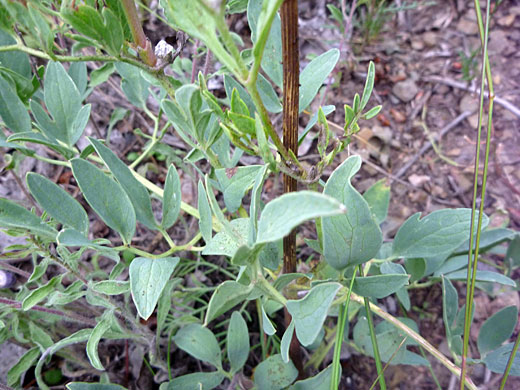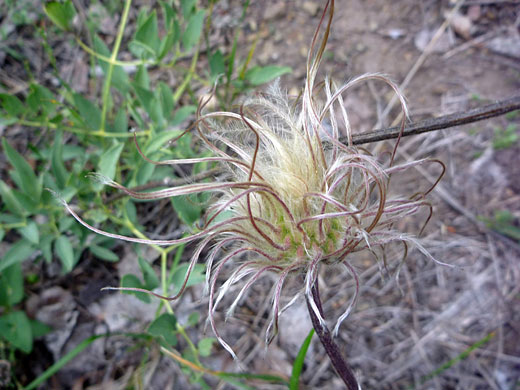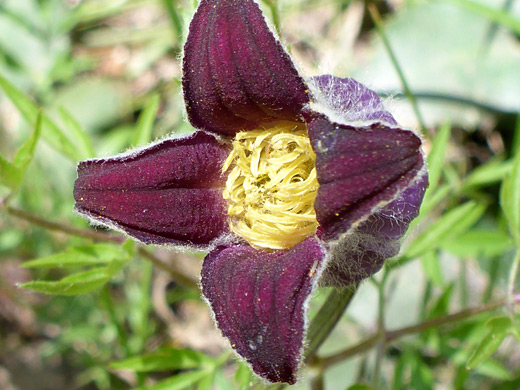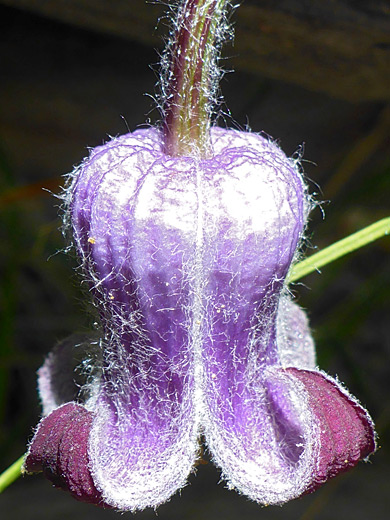Common names:
Sugarbowls, leather flower, vase flower, hairy clematis
Family:
Scientific name:
Clematis hirsutissima
Main flower color:
Range:
From the Pacific Northwest to the southern Rocky Mountains, and neighboring areas
Height:
Between 8 and 24 inches
Habitat:
Pine forests, sagebrush, grassland
Leaves:
Divided several times into narrow, lanceolate lobes, up to 5 inches long
Season:
April to August
The large, urn- or bell-shaped flowers of clematis hirsutissima are borne singly at the top of stout purplish stems, which have a covering of silvery hairs, extending to the underside of the four fused sepals that form the head. The pointed sepal tips curve back to reveal a center of many hairy, whitish stamens and styles, the latter which form long, feathery fruits when mature. Stems are erect, but not vine-like as in many other clematis species. Two varieties are hirsutissima, where the leaves are narrow and generally less than 1/4 inch wide, and scottii, where the leaves are more ovate, up to half an inch across.
The plant is found in dry places in woodland, often partly obscured by undergrowth, and is one of the more distinctive wildflowers in the west, not similar to other species.
The plant is found in dry places in woodland, often partly obscured by undergrowth, and is one of the more distinctive wildflowers in the west, not similar to other species.
All Contents © Copyright The American Southwest | Comments and Questions | Contribute | Site Map






